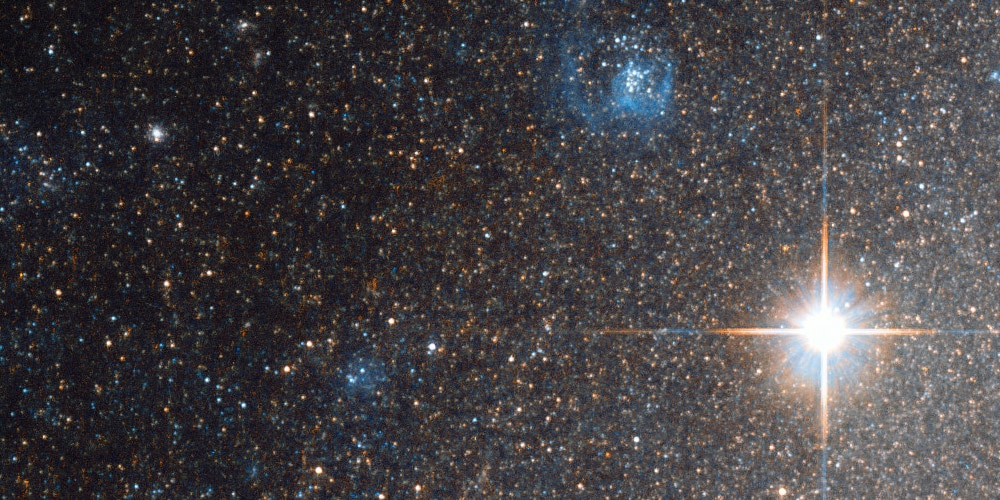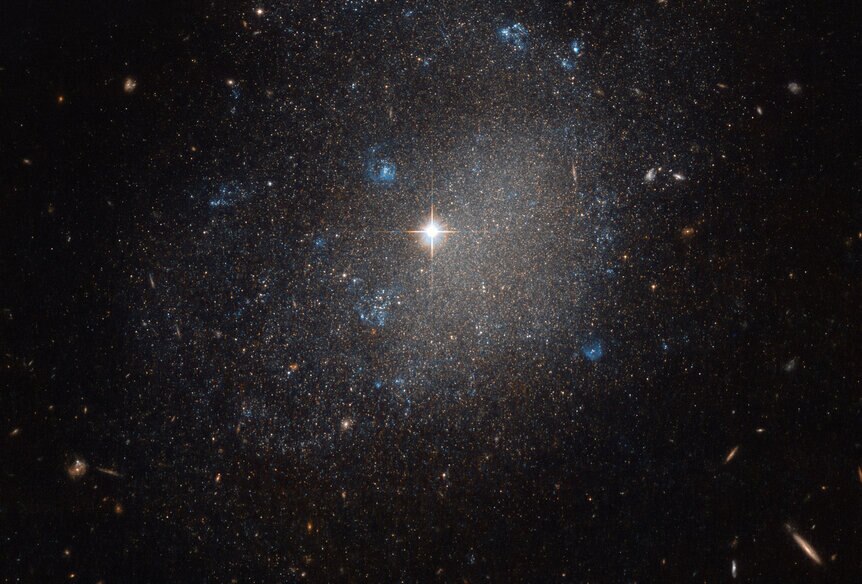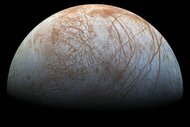Create a free profile to get unlimited access to exclusive videos, sweepstakes, and more!
NGC 4707: A lovely galaxy with a lot more going on than meets the eye

Sometimes, my job is easy. The folks at Hubble will release a gorgeous image of some spectacular object, stick it online for all to see, and all I have to do is point you at it.
Sometimes, my job is hard. I look at the image and see something odd, then check out how it was observed, then wonder why it was chosen, then look up its distance, then discover it’s classified weirdly, then realize I’ve spent an hour down the Internet rabbit hole of astronomical awesomeness.
Here’s a secret: I lied. It’s not hard, it’s fun. Let me show you.
First, the gorgeous image of a spectacular object: NGC 4707, a galaxy about 22 million light-years away:
Ooooo, pretty! You can see it resolved by Hubble into stars and gas clouds; when it was first discovered by John Herschel in 1834, he could only see it as a slightly fuzzy object, calling it a “small, stellar galaxy.” Note that this was a century before we knew what galaxies really were!
I have some familiarity with both galaxies and Hubble images, so even at a glance, I saw several clues about the situation. The fact that we can see individual stars in it means it must be close on cosmic terms. Even with Hubble, a galaxy too far away looks fuzzier as the light from billions of stars blends together. For this one, I had actually guessed something like 20-30 million light-years before reading the press release! For comparison, the nearest big galaxy to us, the Andromeda Galaxy, is about 2.5 million light-years away.
Another thing: That bright star is likely a foreground star, one in our galaxy that happens to be in the way (thousands instead of millions of light-years away). Sometimes, galaxies have a handful of brighter stars in them, but that one is so much brighter, it’s unlikely to be a citizen of NGC 4707, and instead is far more local.
But then I realized something was odd. Why are the gas clouds blue? Huge clouds of gas like that are composed of hydrogen, lit by bright stars inside or nearby, and tend to glow red (or, sometimes, they look pink depending on how the colors of the image are balanced). I smiled to myself, strongly suspecting the answer. I checked the Hubble archive for NGC 4707, a site that gives info on how the observations were made.
Aha! The image was made using two filters. In the column for Filters/Gratings, it lists F606W and F814W. The F stands for “filter”, and the W for “wide”, meaning it looks at a wide range of colors in that filter (as opposed to a very narrow slice of the spectrum). The numbers refer to the central wavelength of the filter; in this case 606 and 814 nanometers. 606 nm is in the red part of the spectrum, and 814 in the near infrared.
To give us a “natural color” image, something close to what our eyes would see, you need three filters: one in the blue, one in the green, and one in the red. Then you create an image combining those three, assigning them their corresponding color when they’re displayed on a monitor. But in this case there were only two, so right away the image isn’t “natural”.
Also, the people putting the image together let the F606W image be mapped to cyan, and the F814W map to orange/red (you can also find this on the ESA Hubble page, which gives that information at the bottom of the menu on the right side). That’s why it looks odd to me! That red hydrogen gas is shown as blue in the image. It’s pretty, but it looks a little funny to me.
Mind you, this is a perfectly legit way to do this! You just have to be aware as a consumer that it’s displayed in an unusual way. For example, if you look at the Wikipedia page, it states that the galaxy has “several turquoise-colored star forming regions” which is not correct. They are only displayed as turquoise (well, cyan). They’re actually red.
But I’m not done. I wondered what kind of galaxy it was; to my eye, it’s a dwarf irregular, a small galaxy with no particular shape. But when I looked up the galaxy type using NED (the NASA/IPAC Extragalactic Database), it was listed as “Sm”. That means “Magellanic spiral”, which in itself is a whole thing. Magellanic refers to the Large Magellanic Cloud, a small galaxy that orbits the Milky Way. It’s more or less irregular in shape, but also has what may be a nascent spiral arm forming in it. So, an Sm galaxy is one like that, with a loose, ill-formed, generally single spiral arm. You can make it out in the Hubble image of NGC 4707, starting in the lower left and sweeping around counterclockwise.
And the galaxy’s distance? There are many ways to find that for a nearby galaxy, but one is using its redshift: how much the wavelength of light from it is stretched out by the expansion of the Universe. That isn’t hugely accurate for nearby galaxies, because their local motion can be big enough to swamp the overall Universal expansion, which gets bigger as you go farther away. Still, NED lists the galaxy’s redshift as 0.001561 (a numerical value for how much the wavelength is stretched), so I popped that into Ned (no relation) Wright’s Cosmology Calculator, and that tells me the light travel time (how long it takes light to get from there to here) is 0.022 Gyr —0.022 gigayears, or 0.022 billion years. In other words, 22 million years. In astronomy lingo, that means it’s 22 million light-years away.
There’s tons more you can find out, too. For example, NED says it’s about 2 arcminutes across. An arcminute is an angular size; there are 60 arcminutes in a degree (as I like to point out, the Moon is 0.5° in the sky, or 30 arcminutes). If we know the distance to the galaxy (22 million light-years) and its apparent size (2 arcminutes), we can throw that into a small angle calculator (I like the one at 1728.org) and, making sure the settings are correct, I get that NGC 4707 is about 12,000 light-years across. That sounds about right; our Milky Way is 100,000 light-years in diameter, and dwarfs are usually a tenth of that or so.
All very cool, but why was this galaxy observed? Ah, the Hubble archive to the rescue again. The link under “Proposal ID” takes you to a brief synopsis of why the observations were made. In this case, it was to get very accurate measurements of the colors and brightnesses of the brightest stars in NGC 4707, which in turn can be used to determine the galaxy’s distance. The astronomers who made these observations are doing this for a lot of nearby small galaxies, which will help them map their location in space, which in turn will hopefully yield information about the local distribution of dark matter and dark energy. Pretty amazing, and all of it done very quickly; these observations were only 2200 seconds (37 minutes) combined!
I could go on and on. It’s pretty cool how much information is out there floating around if you have the eye for it, and the willingness to dig even a little bit. It really was fun poking around to see more about this galaxy I had never heard of, and to discover how, despite its diminutive stature and oddly-filtered image, it will help us better understand the Universe at large.



























